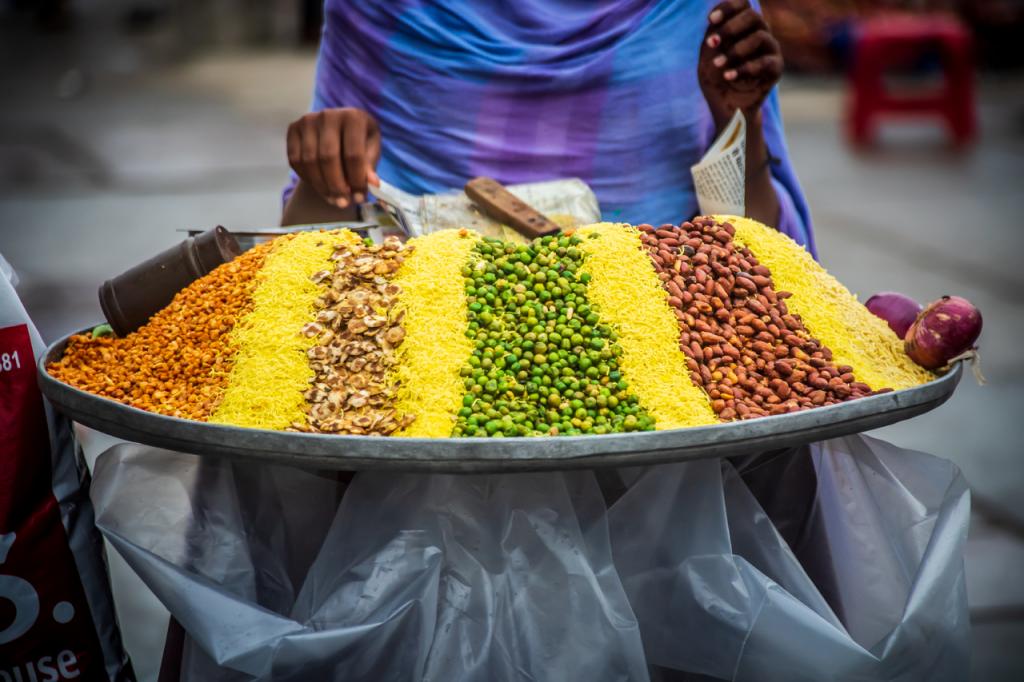Hunger remains an enormous problem in today’s world. It affects an estimated 690 million people, even before taking into account the additional consequences of the COVID-19 pandemic. Hungry people include subsistence farmers whose harvests fail because of extreme weather events, day labourers who run out of work because of economic crises or illness, and generally people living in poverty anywhere in the world and unable to provide enough food for themselves and their families.
Hunger and malnutrition are associated terms that are often used interchangeably. However, unlike hunger, malnutrition does not refer exclusively or specifically to insufficient quantity of food in terms of caloric intake, but also to insufficient nutritional quality of consumed food. A growing number of people in the world suffer from overweight and obesity, the consequence of a form of malnutrition associated with mass consumption of processed
foods that are high in calories but low in nutritional value. Whether we are speaking about a lack of (access to) food or a lack of (access to) nutritious food, inequality in its many different forms is a main driver for both hunger and malnutrition. At the level of states, inequality depends on the existence and the strength of social welfare systems. People who have insufficient income to buy food for themselves and their families might receive welfare payments, provisions from food banks, and free school meals in countries where such support is available. Citizens of less wealthy countries may have to rely more on family and community or on international food assistance, or simply have no support at all. The inequality in access to food and healthy diets is expected to grow wider in the face of the COVID-19 crises. States that have the means provide unprecedented economic support to prevent their population from losing their incomes and going hungry.
Lack of (access to) nutritious food often results in malnutrition in the form of obesity and related health consequences. The quality of one’s diet is largely not a matter of choice, but depends on physical and financial accessibility of types of food. Highly processed and unhealthy foods that contain much sugar, salt, and saturated fats are often more available and more affordable than healthier fresh foods. Education also plays a role in the consumption of healthy foods, with unhealthy diet choices being more widely advertised.
The nexus between inequality and food therefore goes further than physical availability and economic access to healthy food. While serious changes in our food consumption patterns are necessary to tackle hunger and malnutrition, access to a healthy diet is a privilege of the lucky few. A large proportion of the world’s population, in rich countries and poor countries alike, does not have the luxury to secure a healthy diet. Many people struggling to make a living simply do not have the time to buy and prepare healthy meals, nor do they have the capacity to navigate through an increasingly complex maze of dietary guidelines. This is not to deny the value and the contribution of consumer behaviour and consumer patterns, such as trends towards more organic products, less meat, and more generally quality food over fast food. However, we must recognise that only a minority of consumers are in the comfortable position to be able to make these choices as individuals, and the power of consumers is negligible in comparison with the power of corporate players in the global food system.
In a neoliberal food system, corporations have become incredibly mighty with the role of the state diminishing. Powerful conglomerates of food companies (such as Nestlé and Unilever), agricultural biotechnology corporations (such as Monsanto and Syngenta), and supermarkets influence what food is being produced and made available to consumers. Dominance of the private sector means that profits from food sales weigh more than considerations of health and wellbeing. Highly processed unhealthy foods are available cheaply and in bulk, while healthier options tend to be more expensive and targeted at a more limited group of wealthier consumers. Public authorities frequently counter calls for hard measures such as sugar tax and stricter controls on advertisements for children’s foods by emphasising consumer choice and market freedom. Consequently, regulatory measures often remain limited to soft nudges such as nutritional labelling.
The neoliberal global food system focuses predominantly on growth in terms of food production. This remains true in spite of annual reports by the Food and Agriculture Organization stressing that there is enough food available globally to feed the entire world population. The primary issue both for hunger and for malnutrition is not overall global availability of food, nor is it overall global capacity to produce food. The real issue is what kind of food is being produced and who has access to adequate food and a healthy diet. It is an issue of distribution of food and of choices that are made on what kinds of foods are produced, advertised, and made available financially and physically. It is time for states to take their responsibility in regulating global food systems both domestically and internationally, rather than leaving this up to private actors in free markets. In a world where both hunger and obesity are on the rise, and where the knowledge and capacity to provide adequate healthy diets are available, it should not be acceptable to limit state regulation to gentle recommendations and de facto leave the private sector in control.
This article was published in Globe, The Graduate Institute Review, #27, Spring 2021.



